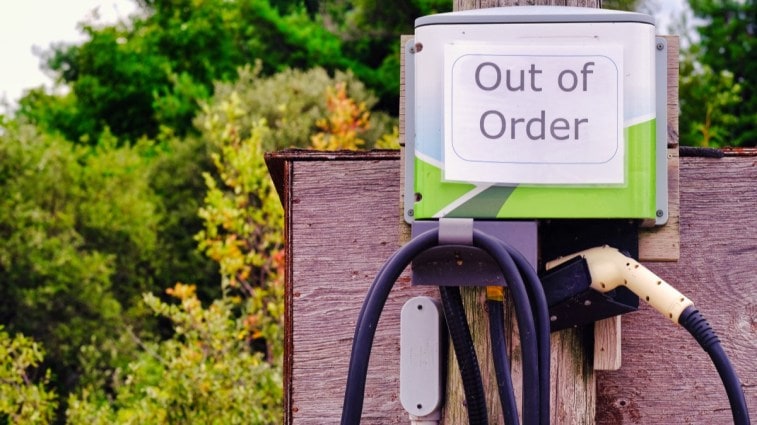
The J.D. Power U.S. Electric Vehicle Experience Public Charging Study surveyed 15,079 owners of EVs and plug-in hybrid electric vehicles (PHEVs) about their experiences with public chargers – those found outside the home.
Two Types of Chargers, Both Disliked
Public chargers generally fall into two categories.
Related – EV Charging Stations: Everything You Need to Know
Level 2 chargers, also known as destination chargers, use 240-volt outlets like those that power electric clothes dryers. They work faster than plugging into a conventional wall outlet. But they can still take hours to charge most EV batteries fully. They’re commonly found at shopping centers and other locations where drivers might park for a few hours.
Level 3 chargers, also called fast chargers, use direct current (DC) and work much faster, refilling some EV batteries in half an hour. They’re commonly found at highway rest stops and other locations where drivers want to charge as quickly as possible, though they still take much longer than refilling a gas tank.
Researchers found that “customer satisfaction with public Level 2 charging has declined to 617 (on a 1,000-point scale), 16 points lower than a year ago and the lowest level since the study began in 2021.”
The speed of charging at Level 2 chargers scored poorly, “decreasing 36 points year over year to 455.”
The public experience of Level 3 chargers dropped 20 points to 654. “Interestingly, those using DC fast chargers don’t fare much better as satisfaction with the speed of charging declines 30 points to 588,” researchers wrote.
“EV owners continue to have issues with many aspects of public charging, as the cost and speed of charging and the availability of things to do while waiting for their vehicle to charge are the least satisfying aspects,” says Brent Gruber, executive director of the EV practice at J.D. Power.
Reliability is a problem as well. “The situation is stuck at a level where one of every five visits ends without charging, the majority of which are due to station outages,” he explains.
One Possible Solution – Flocking to Tesla Chargers
Many automakers hope to improve this situation by tapping into Tesla’s better-regarded network of Superchargers. Tesla’s chargers require a different plug than other EV chargers.
Ford, GM, Mercedes-Benz, Nissan, and others have all announced recent agreements to adopt the Tesla plug.
That may have some impact. “Tesla owners are relatively satisfied with the Tesla Supercharger network,” the researchers found. Tesla’s network earned a score of 745 out of 1,000. But when Tesla drivers “go outside the network to use other public charging options, satisfaction declines by nearly 200 points” to 550.







